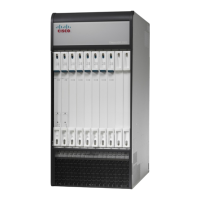Updating the Boot Record
You must add a new boot stack entry for the recently downloaded software image (.bin) file.
Step 1
Run the Exec mode show boot command to verify that there are less than 10 entries in the boot.sys file and that a higher
priority entry is available (minimally there is no priority 1 entry in the boot stack).
Step 2
Create a new boot stack entry for the new file group, consisting of the new operating system image file and the currently
used CLI configuration file by entering the following Global Configuration command:
[local]host_name(config)# boot system priority number image image_url /flash/filename config cfg_url
/flash/filename
Step 3
Assign the next highest priority to this entry, by using the <N-1> method, wherein you assign a priority number that is
one number less than your current highest priority.
If priority 1 is in use, you must renumber the existing entries to ensure that at least that priority is available. The maximum
number of boot stack entries that can be contained in the boot.sys file is 10. If there are already 10 entries in the boot
stack, you must delete at least one of these entries (typically, the lowest priority) and, if necessary, renumber some or
all of the other entries before proceeding. Use the no boot system priority command to delete a book stack entry.For
information on using the boot system priority command, refer to the Adding a New Boot Stack Entry section in this
guide
Synchronizing File Systems
Synchronize the local file systems by entering the following Exec mode command:
[local]host_name# filesystem synchronize all
Reboot StarOS
Reboot the StarOS by entering the following command:
[local]host_name# reload [-noconfirm]
As the system reboots, it loads the new operating system software image and its corresponding CLI
configuration file using the new boot stack entry configured earlier.
After the system reboots, establish a CLI session and enter the show version command to verify that the active
software version is correct.
Optional for PDSN: If you are using the IP Pool Sharing Protocol during your upgrade, refer to Configuring
IPSP Before the Software Upgrade in the PDSN Administration Guide.
Updating the Configuration File
Features in the new operating system may require changes to the configuration file. These changes can be
done manually or facilitated by custom scripts prepared by Cisco TAC. Make whatever changes are necessary
prior to saving the updated configuration file.
ASR 5500 System Administration Guide, StarOS Release 21.5
294
Interchassis Session Recovery
Standby ICSR System

